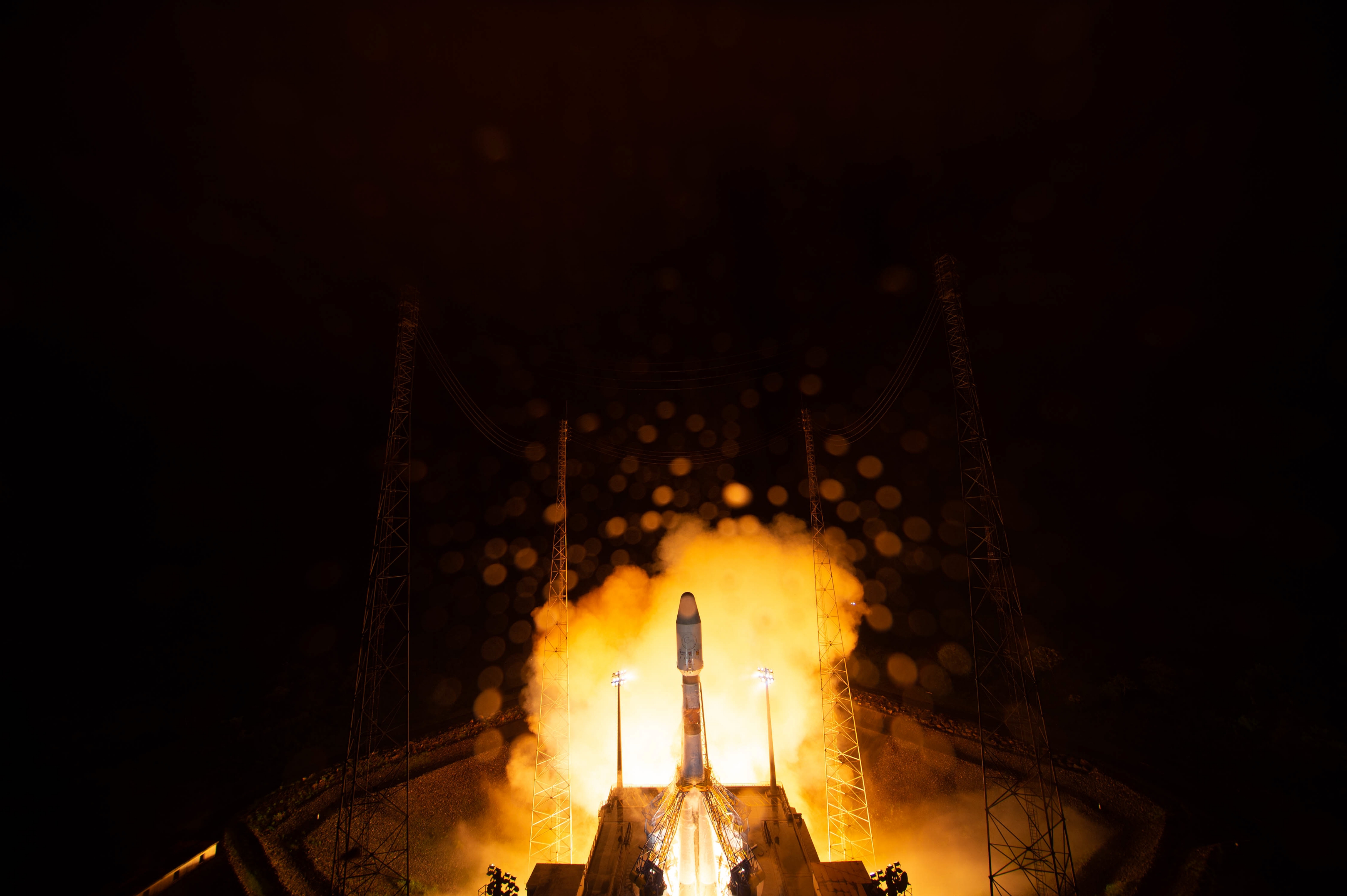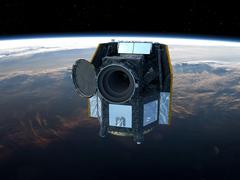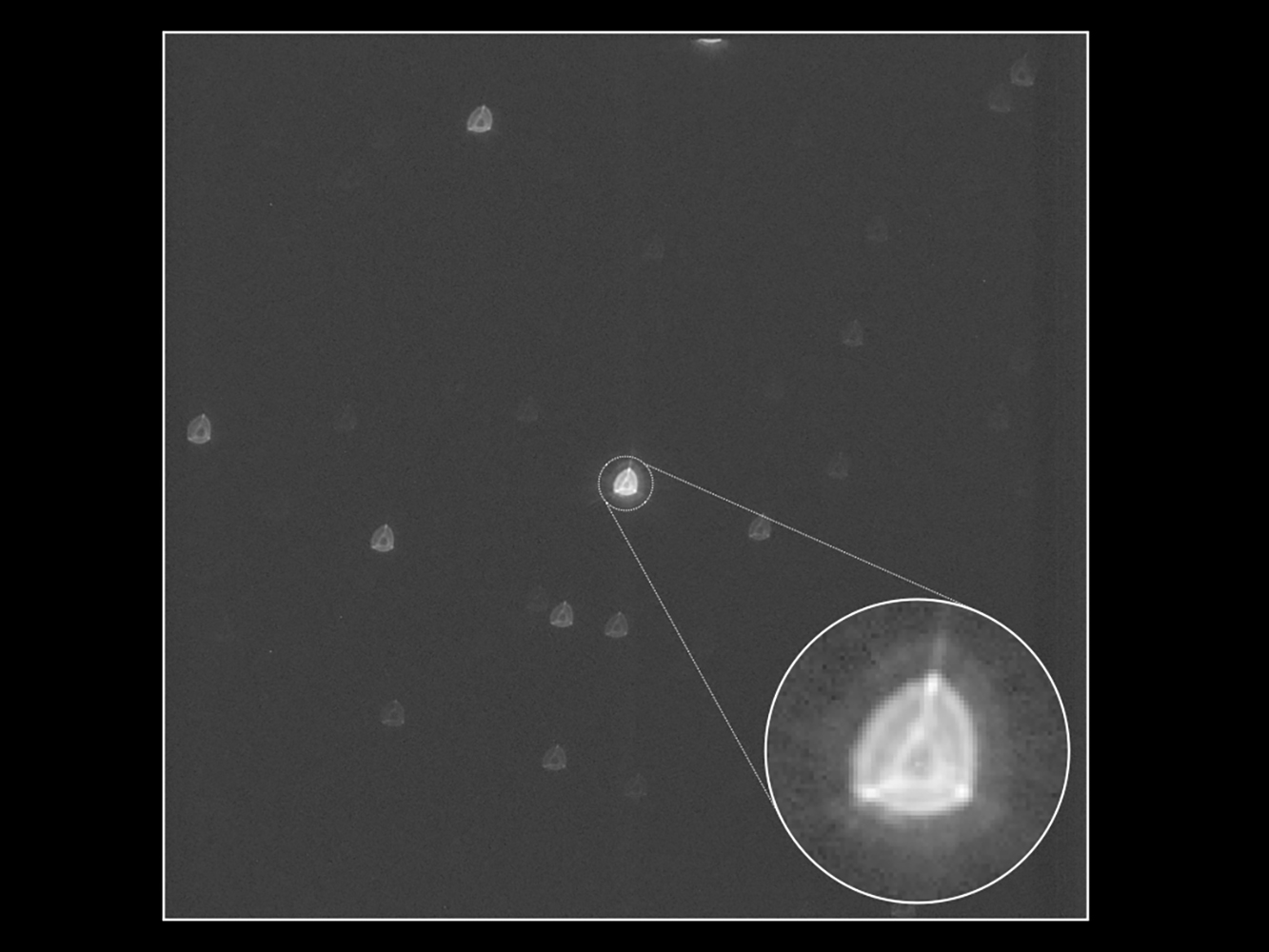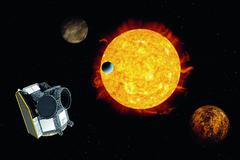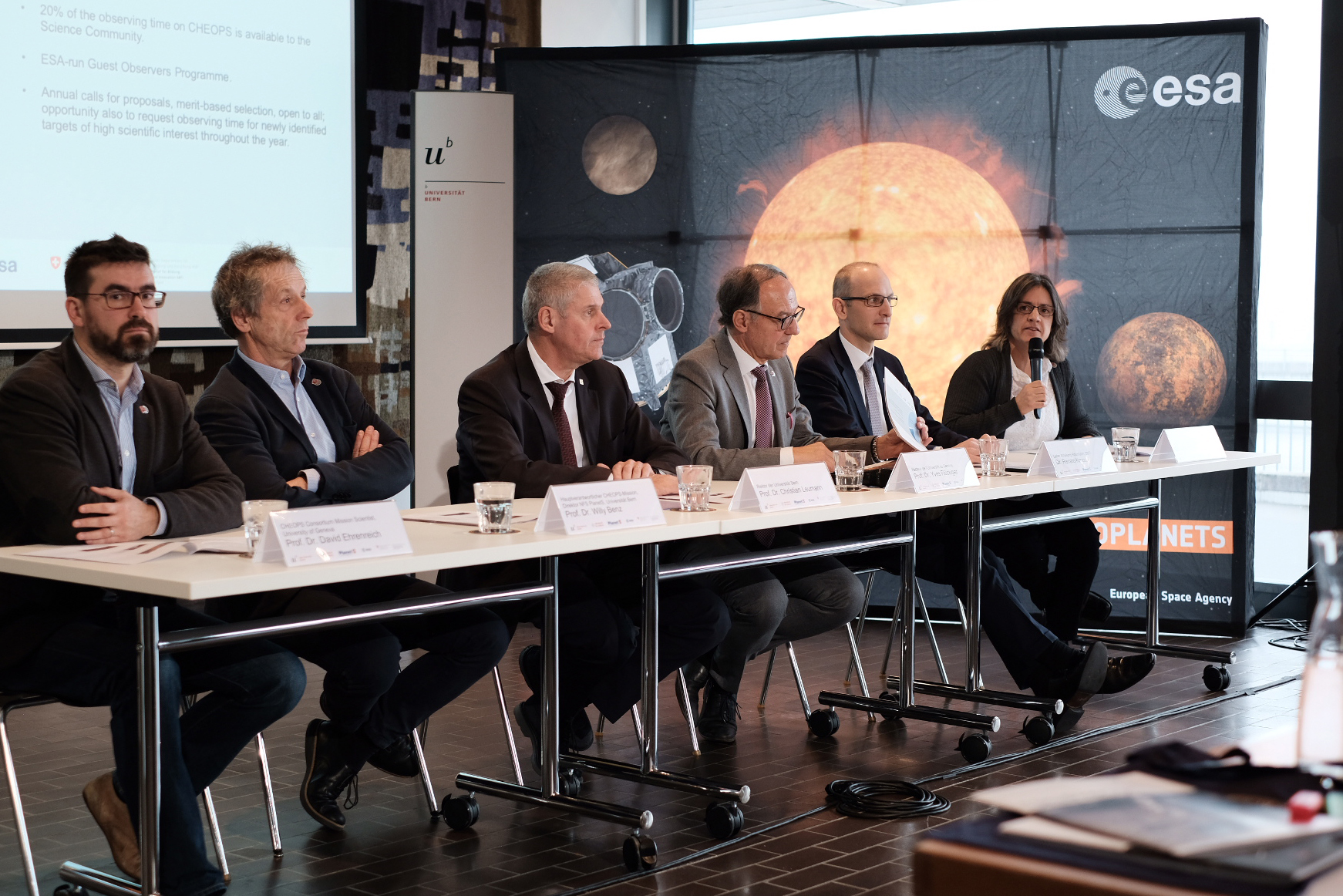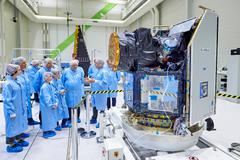Two-year launch anniversary of CHEOPS
After two years in orbit, the CHEOPS space telescope has exceeded expectations. By reliably revealing details of some of the most fascinating exoplanets, it has quickly become a key instrument for astronomers in Europe and has led to fruitful collaborations throughout the continent. CHEOPS is a joint mission by the European Space Agency (ESA) and Switzerland, under the aegis of the University of Bern in collaboration with the University of Geneva.
Since its launch from Europe's Spaceport in French Guiana, on December 18 2019, the CHEOPS telescope in Earth’s orbit has demonstrated its functionality and precision beyond expectations. That it would ever to get to that point was never a certainty and would have almost been impossible due to the Corona virus pandemic.
A key part of European astronomy
“We were very lucky that things went so smoothly. After years of preparation, construction and testing, it is amazing to think that if the launch had been delayed only two more weeks, things could have gone very differently”, Willy Benz, Professor of astrophysics at the University of Bern and head of the CHEOPS consortium, recalls. Due to the pandemic, access to the operation centre was very limited. Luckily, just shortly before large parts of Europe went into shutdown, all the necessary checks were completed and the telescope could run in an automated operation mode. This allowed the scientists working with CHEOPS to operate the instrument remotely and thus gather all the observational data they needed to do their research – and they did so quite diligently.
Thus far, nearly 100 scientists, coming from 40 institutions all over the continent, have thus far had the chance to benefit from the unique capabilities of CHEOPS. This has led to impactful research published in nearly 30 scientific papers. Findings include the characterization of blisteringly hot planet atmospheres that evaporate iron, the detection of planetary systems that orbit their star in near perfect harmony or the measurement of the structure of icy super-Earths. “CHEOPS has demonstrated its flexibility, reliability and high precision on many occasions – for example by revealing details of planets and planetary systems that remained hidden from other instruments, like NASA’s Transiting Exoplanets Survey Satellite (TESS)”, mission scientist David Ehrenreich, who is also a Professor of astronomy at the University of Geneva says.
A valuable asset for the future
The capabilities CHEOPS could continue to serve the scientific community well, even with the launch of the next generation of instruments – such as the upcoming James Webb Space Telescope (JWST) of NASA. “We are convinced with its high precision and flexibility, CHEOPS can act as a bridge between instruments like TESS and the JWST, as the JWST needs precise information on potentially interesting observation targets. While TESS can detect many targets, CHEOPS can help to filter out the most promising ones and thus optimize the operation of the 10 billion $ instrument that is the JWST”, Willy Benz points out.
“We also hope that scientific advances will allow us to extend the research foci of CHEOPS to study the atmospheric circulations and clouds on exoplanets or to detect the first moon around an exoplanet”, David Ehrenreich adds. Whether these goals will be attainable will also depend on the decision of ESA to extend the operation period of CHEOPS, which is scheduled to end next autumn, to 2025. In any case: an exciting year lies ahead for the “Swiss” telescope in space.
|
Interview with Yann Alibert and Matthew Hooton: Research with the $10 billion space telescopeYann Alibert and Matthew Hooton are eagerly awaiting the planned launch of the James Webb Space Telescope (JWST) on December 22, 2021. In this interview, the two astrophysicists from the University of Bern tell how they managed to get observation time with JWST and what this has to do with CHEOPS. |
CHEOPS – in search of potential habitable planetsThe CHEOPS mission (CHaracterising ExOPlanet Satellite) is the first of ESA’s newly created “S-class missions” – small-class missions with an ESA budget much smaller than that of large- and medium-size missions, and a shorter timespan from project inception to launch. CHEOPS is dedicated to characterizing the transits of exoplanets. It measures the changes in the brightness of a star when a planet passes in front of that star. This measured value allows the size of the planet to be derived, and for its density to be determined on the basis of existing data. This provides important information on these planets – for example, whether they are predominantly rocky, are composed of gases, or if they have deep oceans. This, in turn, is an important step in determining whether a planet has conditions that are hospitable to life. CHEOPS was developed as part of a partnership between the European Space Agency (ESA) and Switzerland. Under the leadership of the University of Bern and ESA, a consortium of more than a hundred scientists and engineers from eleven European states was involved in constructing the satellite over five years. CHEOPS began its journey into space on Wednesday, December 18, 2019 on board a Soyuz Fregat rocket from the European spaceport in Kourou, French Guiana. Since then, it has been orbiting the Earth on a polar orbit in roughly an hour and a half at an altitude of 700 kilometers following the terminator. The Swiss Confederation participates in the CHEOPS telescope within the PRODEX programme (PROgramme de Développement d'EXpériences scientifiques) of the European Space Agency ESA. Through this programme, national contributions for science missions can be developed and built by project teams from research and industry. This transfer of knowledge and technology between science and industry ultimately also gives Switzerland a structural competitive advantage as a business location – and enables technologies, processes and products to flow into other markets and thus generate added value for our economy. More information: https://cheops.unibe.ch |
Bernese space exploration: With the world’s elite since the first moon landingWhen the second man, "Buzz" Aldrin, stepped out of the lunar module on July 21, 1969, the first task he did was to set up the Bernese Solar Wind Composition experiment (SWC) also known as the “solar wind sail” by planting it in the ground of the moon, even before the American flag. This experiment, which was planned and the results analysed by Prof. Dr. Johannes Geiss and his team from the Physics Institute of the University of Bern, was the first great highlight in the history of Bernese space exploration. Ever since Bernese space exploration has been among the world’s elite, and the University of Bern has been participating in space missions of the major space organizations, such as ESA, NASA, ROSCOSMOS and JAXA. With CHEOPS the University of Bern shares responsibility with ESA for a whole mission. In addition, Bernese researchers are among the world leaders when it comes to models and simulations of the formation and development of planets. The successful work of the Department of Space Research and Planetary Sciences (WP) from the Physics Institute of the University of Bern was consolidated by the foundation of a university competence center, the Center for Space and Habitability (CSH). The Swiss National Fund also awarded the University of Bern the National Center of Competence in Research (NCCR) PlanetS, which it manages together with the University of Geneva. |
Exoplanet research in Geneva: 25 years of expertise awarded a Nobel PrizeCHEOPS will provide crucial information on the size, shape, formation and evolution of known exoplanets. The installation of the "Science Operation Center" of the CHEOPS mission in Geneva, under the supervision of two professors from the UNIGE Astronomy Department, is a logical continuation of the history of research in the field of exoplanets, since it is here that the first was discovered in 1995 by Michel Mayor and Didier Queloz, winners of the 2019 Nobel Prize in Physics. This discovery has enabled the Astronomy Department of the University of Geneva to be at the forefront of research in the field, with the construction and installation of HARPS on the ESO's 3.6m telescope at La Silla in 2003, a spectrograph that remained the most efficient in the world for two decades to determine the mass of exoplanets. However, this year HARPS was surpassed by ESPRESSO, another spectrograph built in Geneva and installed on the VLT in Paranal. CHEOPS is therefore the result of two national expertises, on the one hand the space know-how of the University of Bern with the collaboration of its Geneva counterpart and on the other hand the ground experience of the University of Geneva supported by its colleague in the Swiss capital. Two scientific and technical competences that have also made it possible to create the National Center of Competence in Research (NCCR) PlanetS. |
2021/12/14

